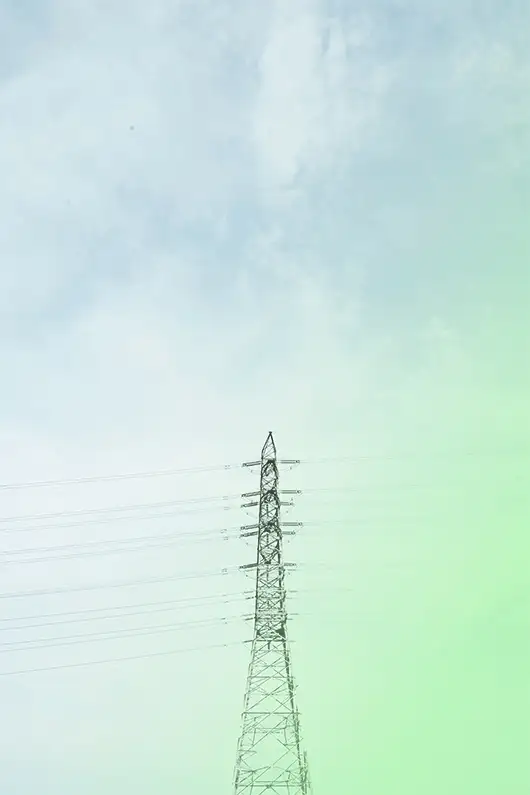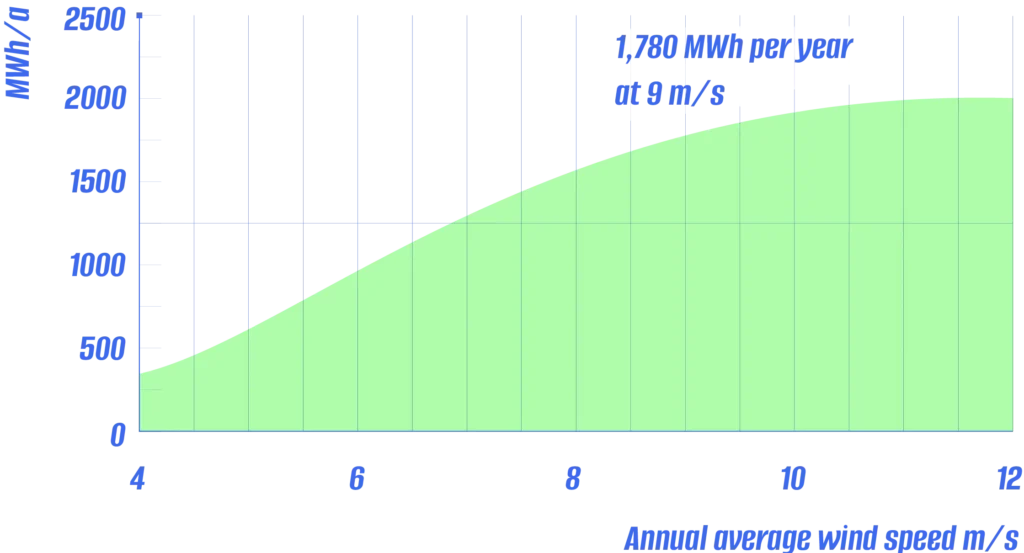Energy independence, taken to new heights

Generates electricity where it’s needed most
Ideal for industrial sites, remote regions, and high energy demands
Scalable and adaptable to specific requirements and locations
Easy to transport and quick to install
Fully compatible with diesel and solar systems
Built for long-term profitability and ready for emerging markets
Send download link to:


Depending on wind conditions, a Kyo system generates up to 1,780 MWh of clean energy per year — enough to supply electricity to around 600 households. The graph below shows how closely energy output tracks with average wind speed — and how effectively Kyo taps into the power of high-altitude winds. What once passed over us unused is now a driving force for a resilient energy future.
Kyo is a high-altitude wind system built for projects with serious power demands. Even in hard-to-reach locations, it reliably delivers up to 450 kW of power and 1,780 MWh of clean energy per year.
Fully containerized, Kyo is quick to install and requires no complex logistics or civil works. As a complement to diesel or solar setups, the kite system enables autonomous, sustainable energy supply — and brings the levelized cost of energy (LCOE) down to less than 10 cents per kilowatt hour.
Up to 450 kW
Up to 700 m
Up to 450 m²
Fully integrated in two standard 40-foot-containers
Up to 1,780 MWh
Tap the digits for more information
Our kites capture the high-altitude winds to generate energy. They are made of high-performance textiles to ensure their durability. Air intakes and air brakes allow changing the aerodynamic profile during start, operation, and landing. Steering lines connect the kite’s canopy to the control pod below. A line system inside the canopy allows reefing it for storage.
The brain of our system: The control pod ensures optimal and secure flight for continuous, efficient energy generation. It contains the autopilot system that steers the kite. Several installed sensors continuously measure all relevant signals. It is powered by a ram air turbine.
The tether connects the control pod and the winch inside the ground station. It is made of HMPE and specially developed for applications with a high demand for safety (e.g., cranes and lifts).
A reliable and flexible launch and landing system is required to safely launch and land the power kite. The mast can be lowered to attach or unmount it completely.
The compact design of our ground station makes it easy to transport and quick to install. It contains the winch with generator & gearbox, control cabinets, inverter, and the energy storage system.
The whole system stands on a simple three-legged steel structure mounted on small concrete plates. A yaw system corrects the ground station’s alignment with the wind direction.

According to BlueWise Marine’s 2023 GIS analysis, around 4,000 suitable sites were identified in Germany where roughly 13,000 airborne wind energy systems could be installed—equivalent to about 19 GW of technically deployable capacity, more than 90 % of it on land unavailable to conventional wind turbines.
With our tower- and foundation-free kite generators, operating at up to 750 m altitude, we can harness this high-altitude wind resource directly and deliver wind power at locations where traditional systems cannot be deployed.

Up to 200 kW
Up to 180 m²
Up to 760 MWh

Up to 450 kW
Up to 450 m²
Up to 1,780 MWh

Up to 1,300 kW
Up to 1,200 m²
Up to 6,580 MWh
TO BE ANNOUNCED
Share your idea with us – choose your preferred system, the desired quantity and the appropriate production period for your project.
To provide you with the best possible experience, we use technologies such as cookies to store and/or access device information. If you consent to these technologies, we may process data such as browsing behavior or unique IDs on this website. If you do not give or withdraw your consent, certain features and functions may be affected.